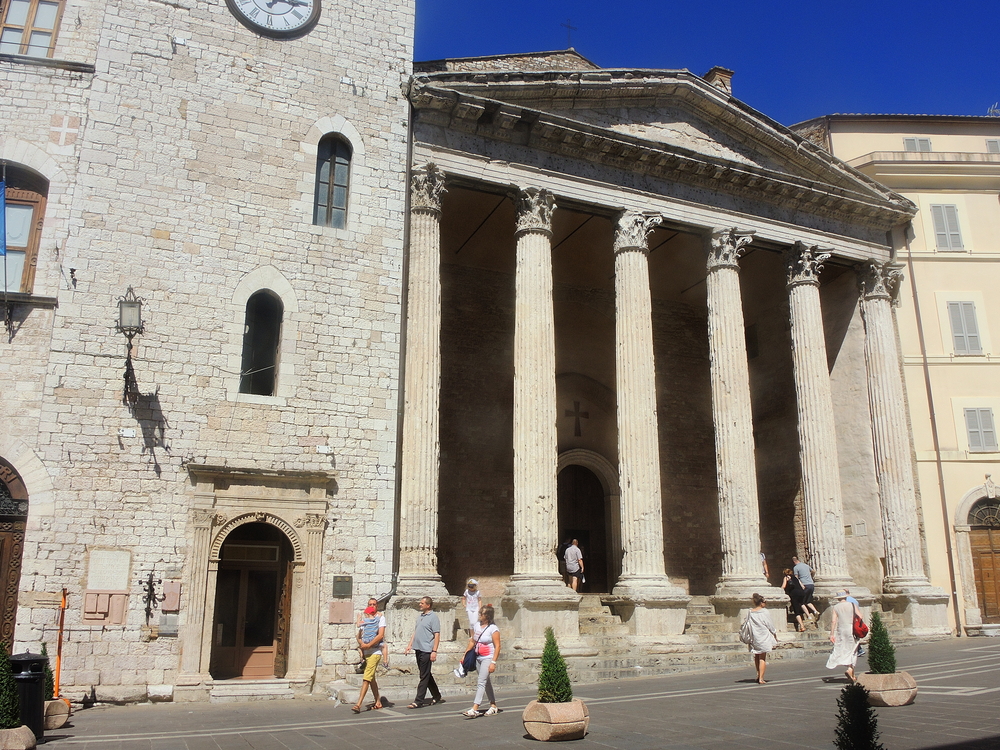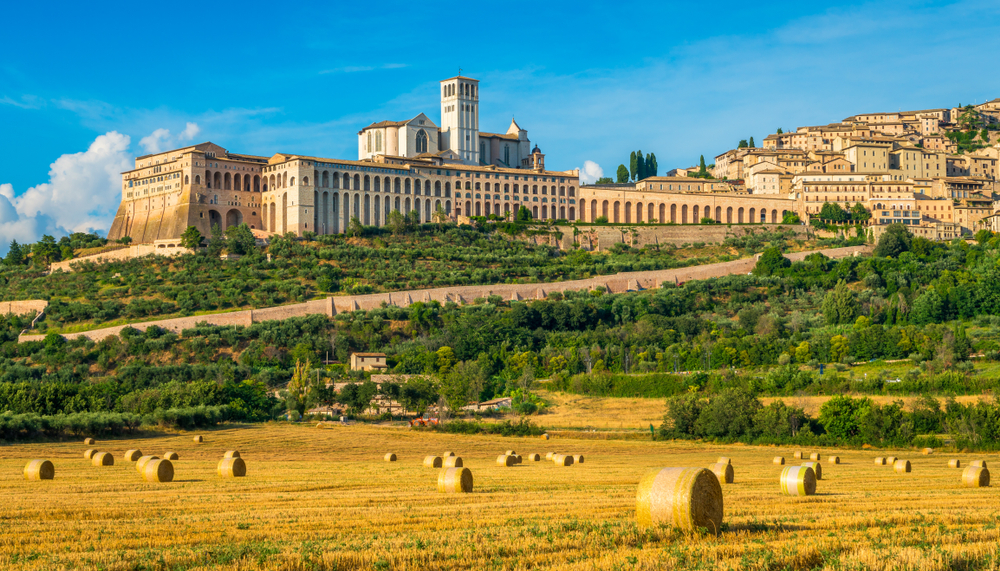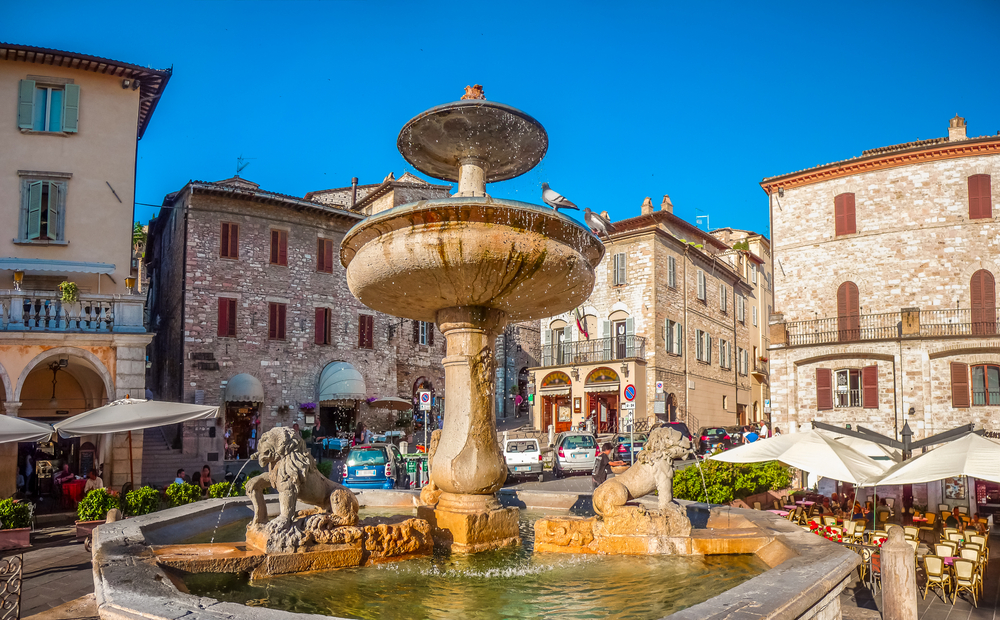Spotlight on Assisi: The History of Assisi
Inebriating and lively in the Spring, powerful and passionate in the Summer, full of spirituality in the Autumn, mystical and evocative in the Winter… Assisi is the ideal destination for all seasons. Lying on the slopes of Mount Subasio, Assisi has been a UNESCO World Heritage site since 2000 and boasts a dynamic but unchanged beauty, with intense aromas and colours.
Visiting Assisi means discovering the ancient past of Roman times. It allows you the opportunity to explore the holy places related to St. Francis and St. Clare. It offers picturesque walking and cycling trails through pilgrimage routes, where you will be immersed in nature. It offers the chance to sample incredible wines, delicious extra virgin olive oil and food still prepared according to the old customs and traditional recipes. Visiting Assisi also means taking part in its many fun and meaningful events throughout the year. In short, Assisi is a special place.
But, the history of Assisi goes back centuries…
Assisi’s Roman name was Asisium. Assisi began diplomatic relations with Rome in the 3rd century BC when it entered a treaty of cooperation by accepting to provide military contingents. In 90 BC it became a Roman Municipality. But, after 41 BC, part of its territory was confiscated and assigned to the nearby town of Spello. In those same years, Properzio, one of the best elegiac poets of the time, was born in Assisi.
Assisi’s prosperity under the Roman Empire is clearly evident today not only in the remains of the Roman Forum but also in the Temple of Minerva, the city walls, the Amphitheatre (in the top part of the town) and the Domus (Roman Domus of Palazzo Giampè and Casa Romana said to be Properzio’s).

The archaeological collection pertaining to the municipality is in the Museum of the Roman Forum, partly housed in the Crypt of San Nicolò, and also extends on the surface underneath the square until it reaches a room where it is possible to see the paved floor of the south area of the ancient Forum.
Following the fall of the Roman Empire, the town was occupied by the Goths and at a later time by the Lombards. At the beginning of the year 1000 AD, Assisi fought hard against Perugia, a Guelph commune, eventually reached a lasting peace with their neighbours.
Then, during the Middle Ages, Assisi became an independent municipality. Assisi arguably lived its most flourishing period between the XII and the XIII century. One of the main reasons for this was thanks to the monastic movements. Assisi’s most illustrious figure, Saint Francis, was born in this period in 1182. He would have a huge influence on every domain of the town’s life: religion, art and culture.

The artistic development of the town is strictly tied to the figure of St. Francis. Just two years after his death on the 16th of July 1228, Pope Gregorio IX came to Assisi to canonise Francesco as a Saint. The following day he blessed the first stone and the building of the Basilica and the Sacred Convent could begin. Those were eminent monuments which have dictated forever the building and historic development of the town of Assisi. Their construction and decoration also summoned the biggest Italian artists of the time. The Palazzo del Capitano del Popolo, the Palazzo del Monte Frumentario and several gates were also built in this period. The painters at work were Cimabue, Giotto, the Maestro di San Francesco and that di Santa Chiara, Pisano and Lorenzetti.

There had been a period of calm following the peace with Perugia in 1000 AD but sadly this didn’t last. The feudal regime was at odds with the demands of the emerging classes and over this period, several signorie (powerful families) ruled the town, including the Signoria of Gian Galeazzo Visconti, of the Montefeltro line, of Braccio Fortebraccio and of Francesco Sforza. There were cruel wars against the nearby towns and Assisi suffered several atrocious raids and devastations, eventually leading to a decline in the city’s prosperity.
In the early 1500s, Assisi once again came under the control of the Papacy when Pope Paolo II restored papal power on the town. Papal control lasted until 1464. Thereafter, the town seems to have enjoyed a period of relative stability. As is often the case, peace brought a new measure of prosperity with it. Over this period, many new buildings sprang up all over Assisi, including many of the palazzi that you see today.

It was only later, in the XIX century, that the town became part of the emerging Italian State, finally becoming part of the newly created Kingdom of Italy in 1860.
In its more recent history, Assisi has been struck by violent earthquakes including that in 1997, when its famous Basilica di San Francesco was damaged and a number of frescoes in the basilica’s vault were destroyed. Thanks to some excellent restoration work, it re-opened to the public just two years later, largely been returned to its former glory,
Today, Assisi is second only to Rome in terms of its importance as a pilgrimage site.
A massive thank you to Alex from Italy Aroma for sharing with us his incredible knowledge of Assisi. If you’re looking to discover more, then Alex offers a fantastic range of tours where you find out more not just about the long and fascinating history of Assisi but where you can also discover the other joys that the city has to offer.


